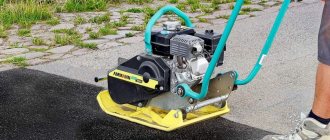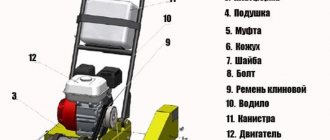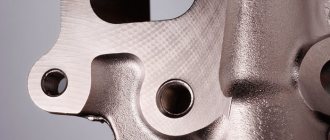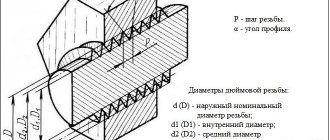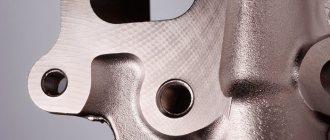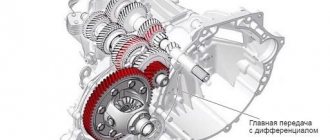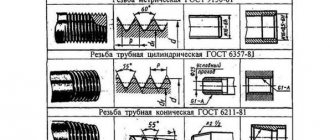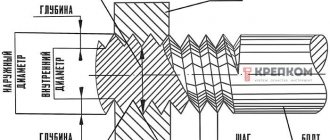Tamper for compacting soil, sand or gravel.
Vibrating plates (rammers) are rightly called professional construction machines. They are used to compact the soil, lay asphalt, paving slabs, and also eliminate various defects and unevenness of the road surface. Such a tool is quite simple to operate, but still, do not forget about standard safety precautions, as well as the peculiarities of performing work for different materials, such as soil, sand, crushed stone, asphalt, tiles and “litter” under the floor.
Purpose and scope of equipment
The scope of application depends on the type of equipment. Thus, a vibratory roller helps compact large volumes of earth in its surface layer. Soil compaction with a vibrating plate is carried out where it is necessary to consolidate a layer of sand, crushed stone or gravel of small thickness - up to 30 cm. Such equipment is also used for installing paving slabs and asphalt.
Vibrating rammers of the “vibrating foot” type compact deeper layers – up to 70 cm thick. The equipment is used where the functions of the two previous types of equipment are not enough, or their dimensions do not allow one to get close to the area in need of treatment. It could be:
The process of soil compaction with a vibrating foot
- arrangement of sidewalks, tram tracks;
- entrance entrance equipment;
- tamping of the bases of supporting structures;
- construction of pile-strip foundations for private houses;
- pothole repair of asphalt.
Both a vibrating plate for soil compaction and a “vibrating foot” can be used when installing communication lines underground.
Vibratory rollers
A vibratory roller is a surface heavy vibratory soil compactor. They are self-propelled, manual and trailed (driven). Rolling is carried out using a smooth metal vibratory roller (there are single- and double-drum vibratory rollers). The mass of a vibration compactor depends on its type and ranges from 0.5 to 12 tons. The heaviest of them are self-propelled.
Due to their large mass, the rollers effectively compact not only sand, but also heavy loams. They are mainly used for the construction of asphalt road surfaces and in large-scale construction of buildings.
Types of vibratory rammers for soil compaction
The main classification of such equipment is based on the type of driving device. It could be:
- electric motor;
- gasoline internal combustion engine;
- diesel.
An electric vibrating rammer for soil compaction is a piece of equipment that, although not very powerful, is mobile and quiet. The engine operating frequency is up to 600 rpm, which makes it possible to work out 250 “squares” per hour. Additional advantages of electric models are environmental friendliness, budget cost, and the ability to work indoors. The disadvantages include the mandatory presence of a power source nearby.
Electric vibratory rammer
The diesel-powered unit is capable of delivering up to 700 rpm, which allows compacting more than 250 square meters of soil. Diesel equipment is productive, durable and economical, but it is expensive and noisy.
Diesel vibrorammer
Vibratory rammers with a gasoline engine are the most popular. With a speed of up to 680 rpm, they are capable of processing about 200 square meters. Such equipment is not tied to power supply, has low noise levels, and is unpretentious to temperature changes. But you can only work on it in an open space (due to toxic gasoline fumes).
Gasoline vibratory rammer for soil compaction - device
What it is?
A vibrating rammer is a multifunctional manual vibrating rammer used in construction to compact bulk materials and loose soils.
In appearance, this device is a compact and mobile device, equipped with manual control. Soil compaction using vibration equipment allows you to solve a number of important problems:
- prevent the process of soil shrinkage under the foundation;
- displace moisture and air from the soil structure.
- level and compact the base of the construction site;
When carrying out preparatory construction work, a vibratory rammer is used where large equipment cannot fit due to limited free space. Hand tools allow you to close narrow openings when laying pipes, in areas located near walls or corners of buildings, when constructing bike paths and laying curbs or sidewalk elements. Portable tools get the job done efficiently without damaging buildings or utilities.
The manual vibratory rammer consists of the following main parts:
- shaft with a special return spring;
- manual control system
- engine, which can be gasoline, diesel or electric;
- sealing sole;
- connecting rod with a special piston;
- cam-type eccentric mechanism;
A manual vibratory rammer can also be called a vibratory rammer, since the area of the compacting sole of this tool is small and amounts to 50-60 cm². This compactness is necessary to reduce the weight of the equipment, but does not reduce the stability of the tool and allows you to develop the vibration force necessary for work. Despite its compact size, this equipment requires significant physical effort from the operator to move the device and maintain its stability in an upright position during operation.
In addition, the worker must be exposed to severe vibration loads, which have a negative impact on health. The effectiveness of a manual vibratory rammer is determined by the force of the impacts and their frequency of 1 minute.
The carefully calibrated design ratio of the device and the significant weight of its upper part to the lower part allow the vibrating tool to move under the influence of gravity, and the operator only needs to direct the movement of the device.
Operating principle of a vibrating ramming device
Different types of vibratory rammers have different vibration amplitudes and frequencies. Usually, when the first indicator is low, the last one is high, and vice versa. If the emphasis is on amplitude, the equipment is used for compacting loose soils. In the second case, the device is suitable for working with viscous compounds, for example, concrete.
Vibrating plate diagram
The operating principle of such equipment is simple. Torque is transmitted from the motor to the “unbalance” shaft - the eccentric, also called the inertial element.
The latter is rigidly fixed to the tamping plate, which receives the energy. After this, the vibration passes to the ground, compacting it.
Almost all vibratory rammers for soil compaction operate in a forced oscillatory mode. To create it, you need a centrifugal vibration exciter. When the eccentric moves, a forced force is generated, which is the basis for the occurrence of vibration.
Self-production of a vibrating plate with a gasoline drive
To create the device you will need the following materials:
- Wheels.
Gasoline drive.- Shock-absorbing pillows from a car engine.
- A sheet of metal with a thickness of 0.8-1 cm and a size of 0.8 * 0.45 meters.
- A pipe whose diameter will be 1.5 * 2.5 cm to create a handle.
- 2 pieces of channel.
- M12 bolts for installing a gasoline-type drive.
When performing installation work you will need the following tools:
- Bulgarian.
- Protective glasses.
- Welding machine, electrodes.
- Cutting wheels for grinders.
- Electric drill.
- Hammer.
Once you have decided on the type of drive that will be used in the device, you can begin to create a working surface with a frame. To create a vibration plate platform, you will need to take a pre-prepared metal sheet and, using a grinder, make cuts at a distance of 10 cm from the edge with a depth of 0.5 cm. After this, the metal should be bent using a hammer along the cuts. The bending angle should be approximately 25 or even 30 degrees. The bending of the edge of the metal sheet is required to prevent the slab from being buried in the ground. To ensure that the ends are stationary at the bending points, they should be welded.
At the second stage, it is necessary to adjust the channels. This is done so that they do not protrude beyond the edges of the working plane. Finished channels should be welded at a distance of 7 to 10 cm from each other to the working surface. The channels must be well welded, since the integrity of the entire structure will depend on this. After this, you can begin installing the engine. To do this, holes should be made in the channels using an electric drill. The motor should be mounted using M12 bolts. Once the engine is installed, you can begin installing the handle. This element should be secured using a shock-absorbing cushion. This is necessary so that the load on the operator’s hands is lightened.
As you can see, even making such a device with your own hands is not as difficult as it might seem at first glance.
Features of popular models
Manufacturers offer many options for vibratory rammers. They differ in characteristics and type of motor part. Operating efficiency depends on the weight, footprint, amplitude and operating frequency of the equipment. What are these indicators for popular models:
| Model | Weight, kg) | engine's type | Length and width of base (mm) | Vibration frequency (Hz) | Amplitude (mm) |
| Ammann ACR-60 | 62 | Petrol | 345x280 | 680 | 65 |
| TSS HCD-90 | 90 | Electric | 330x300 | 450 | 80 |
| Masalta MR-68H | 75 | Petrol | 330x285 | 695 | 40–85 |
| TEKPAC MR68H | 68 | Petrol | 330x285 | 695 | 40–85 |
| Weber MT SRX-750D | 82 | Diesel | 330x280 | 670 | 65 |
By comparing this data from different models, it is easier to choose the appropriate option.
How to choose a pneumatic rammer?
The main technological features of pneumatic drive compaction are:
- Foot area.
- Kinetic energy of impact.
- Permissible number of strokes of the piston with rod.
- Air pressure.
The purpose of the pneumatic conveyor is also important. For example, machines that can operate on a workbench are suitable for compacting foundry sand and are compact and small in size. These include pneumatic rammers of the Archimedes brands UV-203A, PT-4 and PT-6. Larger models: PT-9 and PT-4503 are intended for use in road construction work (although the PT-9 can be used to compact foundry molding sands). CJSC Tekhmash produces the entire line of TPV vibratory rammers.
Comparative characteristics of the most common types of rammers are summarized in the table:
| Sample | Maximum air pressure, kPa | Maximum impact energy, J | Piston stroke frequency, min-1 | Base area, mm2 | Weight of pneumatic rammer, kg | Country of issue |
| PT-4 | 600 | 2,5 | 900 | 121 | 3 | Russia |
| PT-6 | 600 | 4.0 | 840 | 121 | 6 | Russia |
| PT-9 | 600 | 20,0 | 600 | 182 | nine | Russia |
| PT-4503 | 600 | 25,0 | 720 | 215 | 25 | Russia |
| Archimedes UF-203A | 500 | 10,5 | 1200 | 63 | 2,5 | Poland |
When choosing a size, the stroke limit is also taken into account. For desktop pneumatic rammers it usually does not exceed 75... 100 mm, for larger ones it can reach 150 mm. The most popular sizes are those that allow for the replacement of rammers - from round to square, rectangular, etc. It is important that pneumatic rammers are usually driven by some type of hose - rubberized or metal - which is stronger but also less flexible. The presence of a lubricator, which allows the supplied air to be enriched with finely dispersed oil particles, reduces the friction force in the moving parts of the piston and rod.
Accents when purchasing
Anyone who decides to purchase vibratory ramming equipment should pay attention to the availability of:
- soles of different sizes included;
- chassis for ease of movement;
- special nozzles.
It is important that the device be equipped with handles to reduce vibration transmission to the operator's hands. Additional protection will be provided by purchasing anti-vibration gloves.
For operator convenience, the vibratory rammer is equipped with handles
Russian line
The Russian line includes medium mod. DM-614 weighing 14 tons, a heavy machine DM-617 weighing 16 tons and two promising models of heavy rollers weighing 21 and 25 tons. Soil rollers are designed primarily for large-scale work. Among the features of the machines, we can note the Carraro rear axle with a differential lock, which ensures stable operation on slopes and high traction force, a reliable Cummins engine with a sufficient power reserve, a fully lifting hood, which provides convenient access for service, and good ergonomics of the operator’s workplace.
Recommendations for use
Despite the simplicity of the design, a vibratory rammer for soil compaction requires a responsible approach when working with it and compliance with safety regulations:
How to properly compact asphalt with a vibrating rammer
- The operator is only allowed to be behind the vibratory rammer.
- An electric vibrator for soil compaction requires periodic breaks, with simultaneous disconnection from the power grid.
- Do not run the machine on rocky surfaces to avoid damaging the sole.
- Don't forget to regularly clean the air filters on your vibrating rammer.
It is mandatory to use protective boots with metal-reinforced toes, glasses and gloves, and when working with a diesel device, headphones.
A deep vibratory rammer is not used when working with asphalt pavement or paving slabs - this can destroy them. Only a vibrating plate is suitable for such work.
Related video: Vibrating plate Wacker Neuson MP 15
Publications on the topic
Operating principle and operating advantages of the HUTER DY6500LX generator
Rental of special equipment at SMR-Voronezh company
Rating of companies and private advertisements in Novokuznetsk for backhoe loader rental
Electric vibrating plates and compactors from Wacker Neuson
Wacker Neuson has offered three new plate vibratory models powered by universal lithium-ion batteries. The batteries, in two versions, have been specially designed for heavy construction work. The battery capacity is enough to keep one machine running throughout the working day. Operators can replace dead batteries with new ones within seconds thanks to the modular design. Since compaction with electric vibrating plates does not produce harmful emissions, new areas of application are opening up for such equipment: trenches, construction sites located in tunnels and inside buildings, environmental areas. Wacker Neuson has also recently expanded its range of tampers in a new fashion. The AS60e is battery-powered, delivering up to 55% energy savings compared to petrol equivalents. In addition, the electric motor does not require maintenance.
Tamping for laying paving stones manually
tamping for laying paving stones manually.
3. Underlayment for the floor.
When installing houses on the ground, a non-rigid underlying layer must be installed. It includes two layers. They are poured on top of gravel or crushed stone, each layer is moistened and compacted. For backfilling, as well as for the foundation, river sand or washed quarry sand is used. To achieve uniform thickness, pegs are installed and then removed.
4. Laying paving slabs .
When paving pedestrian roads, alleys and areas with paving slabs, sand bedding must also be used. The first and final layers of the paving stone cushion are made from it. Crushed stone is used as a layer between them. All layers of the cake under the tile are compacted tightly according to technology requirements, and periodically moistened to achieve the best result.
For backfilling, sifted river material is used. The thickness of its layers is determined depending on the depth of the trench and the height of the road surface element. It is often necessary to remove soil to great depths due to heaving and other problems that do not allow the soil to become a reliable basis for the installation of paving slabs . In these cases, it is necessary to add a lot of sand and compact it thoroughly. The finishing layer is made at about 7 cm, dry cement is often added to it.
At the service of the client
Direct support from the manufacturer after the initial sale of any equipment protects the contractor's investment and extends the life of the machines. Operator training at the dealership or manufacturing plant increases productivity and also reduces the risk of premature equipment failure. Some manufacturers offer on-site training. In this case, the crew receives the necessary skills and learns how to operate and maintain the equipment in real conditions. It is good practice to publish machine operating instructions on the Internet. This allows contractors, operators and mechanics to access them 24/7 to resolve issues that may arise at any time during operation or maintenance.
The advantage of a manufacturer that offers a wide range of products is that it simplifies the task of completing the equipment fleet. In one “window” it is more convenient to order both spare parts and consumables, for example, hydraulic oil. Some manufacturers offer special financing programs to make ownership of various new machines more affordable for different categories of customers.
Choosing the right compaction equipment may seem like a no-brainer given the number of options on the market. But taking the time to learn how each feature of a particular machine affects the overall outcome of a job can be very rewarding in the long run. It is the key functions of the machines that provide the contractor with a competitive advantage, reduce work completion time and, most importantly, increase profitability.
